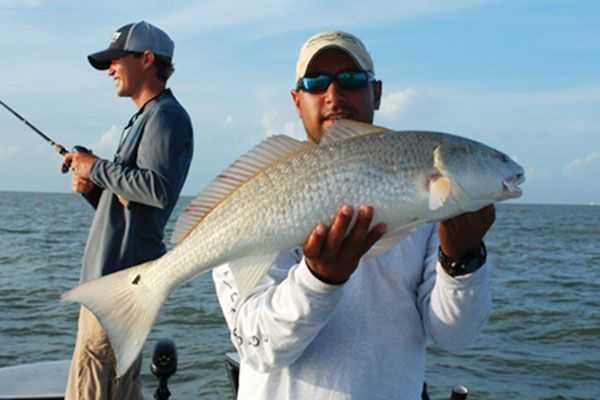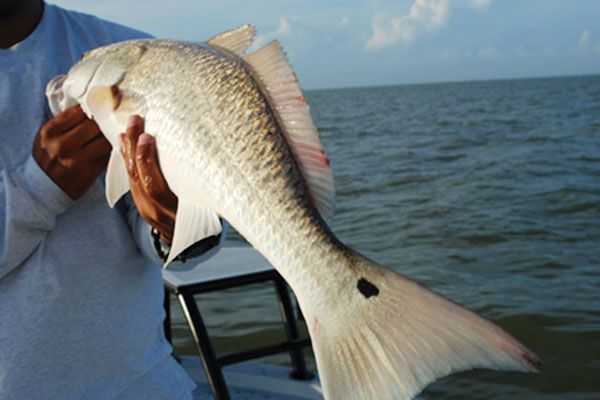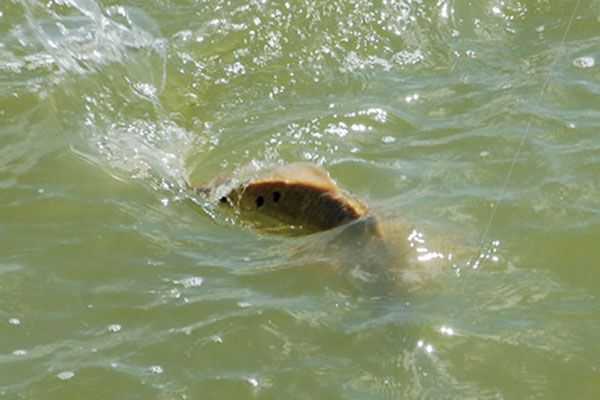Tobin Strickland TroutSupport.com
Special Correspondent
photos courtesy of Capt Brent Juarez & Coastline Marine | Custom Aluminum
September marks the month that most people fishing for redfish truly love. There are numerous ways to fish for redfish. Huge ‘bull reds’ will soon be within reach of passes. Bay shoreline’s harboring smooth cordgrass, oyster reefs, or sea-grass flats will attract numerous juveniles; many tailing, crawling, or creating ‘muds’ as they root for grass shrimp that are maturing. But few hear of the mention of the ‘open water’ bay technique. Mainly because it’s the primary method that savvy tournament anglers utilize to win Gulf Coast redfish tournaments.
The majority of redfish tournaments each year are typically won by someone fishing the open water redfish technique as its become known. It’s extremely rewarding for those that master it, and for those willing to push through a rather frustrating start, a virtual pot of bronze and gold is to be found on the other side. These redfish are brutes; measuring just shy of what we’d refer to as Bull Redfish, the open water schools average between 27 to 35 inches, and eat well feeding on schools of menhaden, shad, and white shrimp.
Capt. Brent Juarez in Galveston, Texas fishes with his tournament partner Cole Starr, owner of Coastline Marine and Custom Aluminum. The teams biggest challenge is actually culling through the larger specimens in search of the sub-adults that still measure within the slot (20-28 inches). The trick is finding 2 fish that push the 9lb mark and still measure just shy of 28-inches; harder said than done. Many tournament days Juarez and Starr catch upwards of 2-dozen ‘Overs’ (the moniker given to the oversized reds they catch measuring over 28 inches. It’s paid off too; Juarez and Starr are always top contenders on the leader board in redfish tournaments along the Gulf Coast.
Why don’t we hear about this technique more often? This happens in just about every Gulf Coast bay from Tampa Bay in Florida to the Lower Laguna Madre in South Texas. Any moderate sized bay with substantial habitat for menhaden, shad, and shrimp will fit the bill. Many people don’t realize that both shrimp and menhaden graze deep open bays with mud bottoms searching for small decaying plant particles emanating from marshes and rivers then settling to the bottom.
One reason the technique is not well publicized is that the fish don’t hold to any sort of structure in the bays. There are no way points, favored reefs, or locations to anchor with this method. Another reason is that many anglers, myself included, have become enamored with the beauty of shallow redfish and site-casting. Unless endless expanses of 7-foot water is beautiful then there’s not much else nearby. What is beautiful is the fact that the fish roam in large schools that feed almost all day with the appetite of athletic teenagers, and the fish will readily take lures.
Juarez and Starr typically use Tidal Surge Split Tail Mullets, a 4.5-inch, saltwater grade, soft plastic with a nice little split tail that gives the lure that extra wiggle. They fish them on the new Tidal Surge jig head in 1/4 to 3/8oz (TidalSurgeLures.com). There are numerous other lures to use…in fact the feeding reds will just about take anything put in front of them, but the beauty of the soft plastic is that one can easily work the entire water column and it’s easy to fish with all day compared to other heavier baits or baits that have more water resistance. Dark colors work well on dirty water conditions and light colors when the water settles on calm summer days; pumpkin seed, red-shad, and pearl are top contenders in the line up on most days.
Locating the schools is the tough part of the game. Reading the water is essential to their style of fishing as well as understanding the nature of the redfish’s quarry of shrimp, menhaden, and shad species. Both shrimp and menhaden tend not to show themselves on the surface often unless being chased by these voracious feeders. The fish create large plums of silt in the water when chasing schools of shrimp or menhaden the guys refer to as ‘mudboils’ and many times that is the key to locating the schools.
Check out Brent and Cole in the latest edition of intense training Speckled Trout and Redfish DVD’s at TroutSupport.com.
[easy-social-share]



